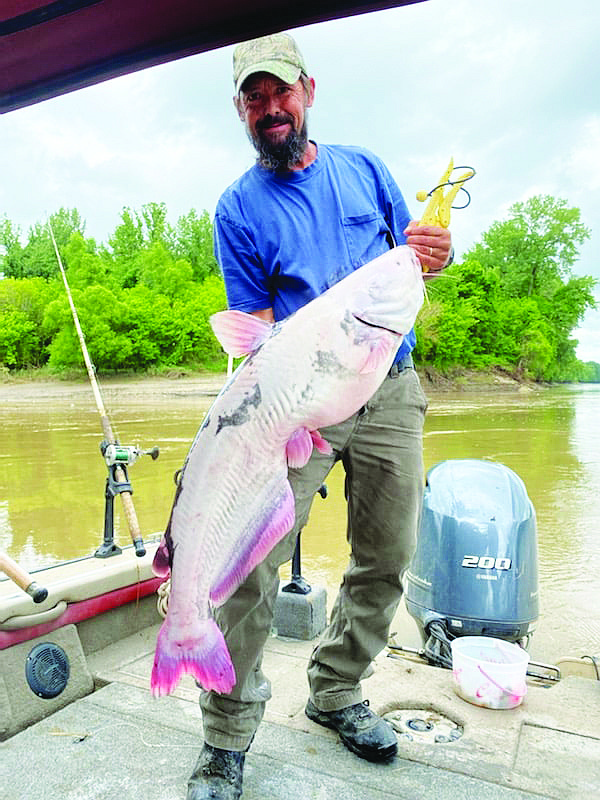A Mokane man recently caught a rare "white" blue catfish on the Missouri River.
Robert Lee used a rod and reel to pull in the 32-pound fish, which had white coloring due to leucism.
Animals with leucism are characterized by their reduced pigmentation. The condition is different from albinism because it is only a partial loss of pigmentation, while albinism takes away all color from animals, including eye pigmentation, which makes their eyes pink. Leucistic animals still have some pigmentation, which gives leucistic fish black-colored eyes contrasted against their pale skin.
Andrew Branson, Missouri Department of Conservation fisheries programs specialist, said it is uncommon to see fish with leucism. He estimated that well under 10 percent of fish experience the condition.
Although leucism usually only appears in patches, Lee's fish was almost entirely white, making it even more unique.
"Usually it's a few blotches here and there or a lighter patch and not so much the entire fish," Branson said.
It is even more unusual to see a mature leucistic fish.
Branson said most leucistic fish do not reach adulthood due to their white color, which makes them stand out to predators because of their inability to blend in with their surroundings. The Missouri River is muddy and dark, so Lee's catch was probably able to hide from predators, Branson said.
Branson said leucism is not indicative of any sickness. Leucistic fish are completely healthy, so they can be safely eaten.
"Other than the odd color, animals that have this condition are basically normal," Branson said. "It's thought to be an inherited condition, and it's a recessive trait so it doesn't happen often. Except for how they look on the outside, on the inside they basically look exactly the same as a normal fish."
A photo of Lee's big catch was shared by the Missouri Department of Conservation on social media.
"Anyone who catches a fish like this ought to consider themselves pretty lucky because it's a rarity," Branson said. "You don't often see them, and they can be quite spectacular-looking."

